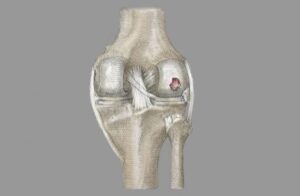In the world of healthcare billing and coding, precision is paramount. Accurate coding ensures that healthcare providers are fairly compensated for the services they provide and plays a crucial role in maintaining the financial health of medical practices. One such code that holds significance is CPT Code 99203. In this article, we will delve into the intricacies of CPT Code 99203, explaining its importance, when to use it, its components, documentation requirements, common pitfalls, and the financial implications of accurate coding.
Understanding CPT Codes
Before we dive into CPT Code 99203, let’s establish a foundational understanding of what CPT codes are and their role in the healthcare industry. CPT, or Current Procedural Terminology, codes are a standardized system used for the billing and coding of medical services and procedures. These codes are essential in translating the services provided by healthcare professionals into a language that insurers and payers can understand.
CPT Code 99203 Explained
CPT Code 99203 is part of the Evaluation and Management (E/M) code set, which encompasses codes used for reporting patient encounters, from routine office visits to in-depth consultations. So, what does CPT Code 99203 specifically entail? It’s a code used to describe an office or other outpatient visit for a new patient, presenting with a straightforward medical problem. The code reflects a moderate level of service.
When to Use CPT Code 99203
Determining when to use CPT Code 99203 is critical for both accurate billing and quality patient care. This code should be used when a new patient presents a medical condition that requires a moderate level of work, medical decision-making, and time. For instance, if a new patient arrives with a health concern that demands a detailed history, a comprehensive examination, and a medical decision involving straightforward diagnoses and management, CPT Code 99203 is the appropriate choice.
Components of CPT Code 99203
For CPT Code 99203, there are specific components that must be met to warrant its use. These components include:
- History of Present Illness (HPI): A detailed account of the patient’s presenting problem.
- Review of Systems (ROS): A review of the patient’s system-related symptoms.
- Past, Family, and Social History (PFSH): A review of the patient’s personal, familial, and social history.
- Examination: A comprehensive physical examination.
- Medical Decision Making (MDM): The complexity of establishing a diagnosis, determining treatment, and managing the patient’s condition.
All these components are essential in determining the level of service provided.
Documentation Requirements
To support the use of CPT Code 99203, thorough and accurate documentation is crucial. Healthcare providers must ensure that their documentation encompasses all the required components. This not only facilitates correct coding but also serves to protect against any potential audits or disputes.
Common Pitfalls and Errors
In the world of coding, mistakes can have significant repercussions. Common pitfalls with CPT Code 99203 include overcoding (billing for a higher level of service than provided) and undercoding (billing for a lower level of service). To avoid these errors, healthcare providers must precisely match their documentation to the code criteria. Failing to do so can lead to denied claims and revenue loss.
Reimbursement and Financial Implications
Accurate coding is intrinsically linked to reimbursement. Understanding the financial implications of CPT Code 99203 is crucial. Accurately coding and documenting services directly influences the reimbursement a healthcare provider receives. Errors in coding can lead to revenue loss, which affects the sustainability of a healthcare practice.
Coding Guidelines and Updates
The world of healthcare is constantly evolving. As such, it’s imperative for healthcare providers to stay updated with coding guidelines and any relevant changes or updates. Consistent compliance with these guidelines ensures that medical practices continue to operate smoothly and efficiently.
Also Read:
Emerging Trends and Ongoing Challenges in Healthcare Coding
The landscape of healthcare coding is continually evolving. As healthcare delivery methods change and medical practices adopt new technologies and services, coding practices must adapt accordingly. Understanding emerging trends and ongoing challenges is essential for healthcare providers to remain at the forefront of accurate and efficient coding.
Emerging Trends:
1. Telehealth and Telemedicine: The COVID-19 pandemic accelerated the adoption of telehealth and telemedicine services. These remote healthcare delivery methods have prompted the introduction of new coding procedures to accurately represent virtual patient encounters. Accurate coding for telehealth services ensures that providers are appropriately compensated for remote consultations, an area that continues to grow.
2. Value-Based Care Models: The shift from traditional fee-for-service models to value-based care models is gaining momentum. In value-based care, reimbursement is linked to patient outcomes and quality of care rather than the volume of services provided. Accurate coding in value-based care models plays a pivotal role in assessing and improving the quality of care delivered to patients.
3. Artificial Intelligence (AI) and Machine Learning: AI and machine learning technologies are being integrated into coding and billing processes. These technologies have the potential to automate certain coding tasks, improve accuracy, and reduce errors. However, they also require skilled oversight to ensure they function effectively.
Ongoing Challenges:
1. Compliance and Audits: Ensuring coding compliance with government regulations such as the Health Insurance Portability and Accountability Act (HIPAA) and dealing with audits can be challenging. Healthcare providers must maintain strict compliance to protect patient data and avoid legal consequences.
2. Evolving Coding Guidelines: Keeping up with evolving coding guidelines and updates can be time-consuming. The American Medical Association (AMA) releases annual updates to the CPT code set, which healthcare providers must incorporate into their coding practices.
3. Risk of Denials and Errors: The risk of coding errors leading to claim denials is ever-present. Incorrect coding can result in claim denials, delayed payments, and revenue loss. Preventing these errors requires vigilant documentation and coding practices.
Conclusion
In the intricate web of healthcare billing and coding, CPT Code 99203 stands as a significant player. Accurate coding not only ensures fair compensation for healthcare providers but also safeguards the financial health of healthcare practices. By understanding when and how to use CPT Code 99203, documenting services meticulously, avoiding common pitfalls, and staying current with coding guidelines, healthcare professionals can secure both quality patient care and financial stability. It’s a testament to the intricate dance of precision in the world of healthcare, one that benefits both patients and providers alike.









